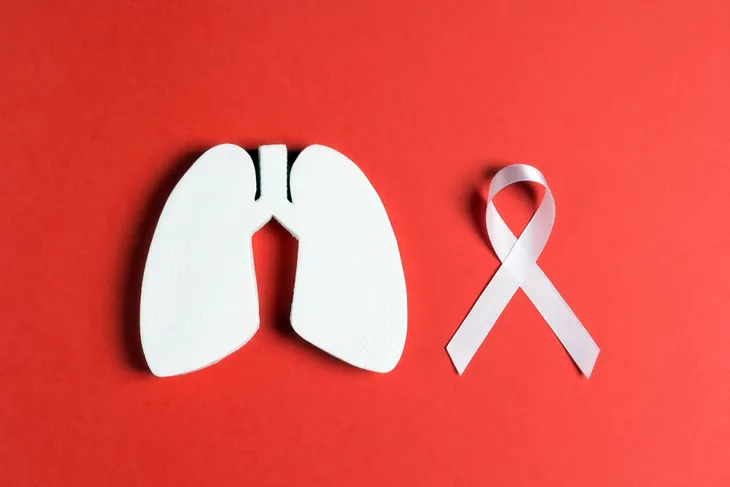Pulmonary nodules, also known as lung nodules, sound like a serious health condition and they can be in certain cases. But they’re also extremely common. The Cleveland Clinic notes, “Countless pulmonary nodules are discovered each year during chest X-rays or CT scans.”
While most of these nodules are not a cause for concern (they are non-cancerous or “benign”), there are risk factors and symptoms that can increase the likelihood of a nodule needing more investigation. Let’s take a closer look at what you need to know about pulmonary nodules.
What Does a Lung Nodule Mean?
First thing’s first: what is a lung nodule? The American Cancer Society describes them as a “small abnormal area” that is uncovered during an imaging scan of the chest for cancer screenings or to pinpoint symptoms, such as a lingering cough.
Medical News Today gets a bit more specific, noting a lung nodule is typically less than or equal to 3-centimeters in size to be called a nodule. If they are any larger, doctors will usually refer to them as “lung masses,” adds the source. The latter is more likely to be cancerous.
Early Signs and Symptoms of Pulmonary Nodules
According to the Cleveland Clinic, in most cases, you probably won’t know if you have a lung nodule (without a scan) because you might not have symptoms. However, other symptoms could be warning signs, such as developing a new cough or coughing up blood (referred to medically as hemoptysis).
Medical News Today notes that while the nodules themselves might fly under the radar, symptoms that are causing the nodule may occur. This includes cancer. Aside from coughing, in this more serious case, a patient could experience breathlessness, back pain, and weight loss.
Causes of Lung Nodules
WebMD acknowledges that more research about benign lung nodules is needed to better understand the causes. But there are some agreed risk factors, such as inflammation from infections that often affect the lungs (e.g., tuberculosis or an “infectious fungus”).
There can also be non-infectious triggers of lung nodules. They include rheumatoid arthritis and granulomatosis. The latter is an uncommon condition that causes inflammation of blood vessels in the lungs and elsewhere. Finally, birth defects, including a lung cyst can also be the culprit. They can also be the result of lung scar tissue.
How Are Lung Nodules Diagnosed?
As noted before, many people won’t know they have a lung nodule unless they go for a routine scan or are experiencing symptoms. The American Cancer Society notes that if a physician finds something suspicious in the scan, they will likely order another CT scan to measure the growth over time.
If the nodule has grown, a doctor can order a positron emission tomography (PET) scan to help determine if it’s cancerous. If the nodule grows in later scans, a biopsy (tissue sample) will likely be required. Doctors can achieve this by placing a long, thin tube equipped with instruments to take tissue samples (a process referred to as bronchoscopy) down the patient’s throat. A pathologist will then analyze the tissue sample.
How Often Should I Get Screened for Lung Cancer?
In many cases, a patient may find out they have a lung nodule only if they’re having symptoms. Of course, the most concerning diagnosis would be lung cancer. However, the Cleveland Clinic has cited some guidelines for how often to get screened for lung cancer, depending on your situation and risk factors.
It notes that annual “low-dose” CT scans are recommended by the U.S. Preventative Services Task Force (USPSTF) for those between the ages of 50 and 80 who have a 20-pack year smoking history and currently smoke or who have quit within the last 15-years. It does warn that there is a slight chance of “false positives” that could lead to more testing or treatment.
When To Worry About Lung Nodules
Like we mentioned earlier, a spot showing up in a medical scan is not usually a reason for concern. The Cleveland Clinic says only about three to four cases per 100 turns out to be cancerous. If you do encounter something abnormal, you should have a follow-up scan to be sure.
Furthermore, if you’re deemed “low-risk” by a doctor, you will likely have an annual scan for the next 2-years to monitor it. On the other hand, someone who is considered “high-risk” might get three scans during that period.
It’s worth noting, be sure to consult a physician if you start experiencing the symptoms we mentioned earlier.
Treatment Options for Lung Nodules
In many cases, there won’t be treatment and just observation. If the nodule has grown or you have telltale signs, a biopsy may be ordered along with a short hospital stay. You won’t need any more treatment from that point if it’s non-cancerous unless you need to be treated for an underlying cause.
If the biopsy can’t be done safely or if cancer is suspected, surgery might be recommended. WebMD says there are several surgical approaches to remove a tumor depending on the location and type. This could include removing a small piece of it all the way up to removing an entire lung. But the goal is generally to remove as little tissue as possible.
Is Preventing Pulmonary Nodules Possible?
Medical News Today explains that depending on the cause of the nodules, there may be no way to prevent them. However, it also stresses that smoking can greatly increase the chances of a cancerous tumor. In fact, about 90-percent of all fatal lung cancers are from smoking cigarettes. “As a result, quitting smoking may prevent malignant lung nodules,” adds the source.
The source also says those with malignant lung nodules can have different outcomes depending on the stage. But generally, if the nodule isn’t cancerous, there’s typically a “good outlook” and less chance of complications. Keep in mind, early detection is your friend!











